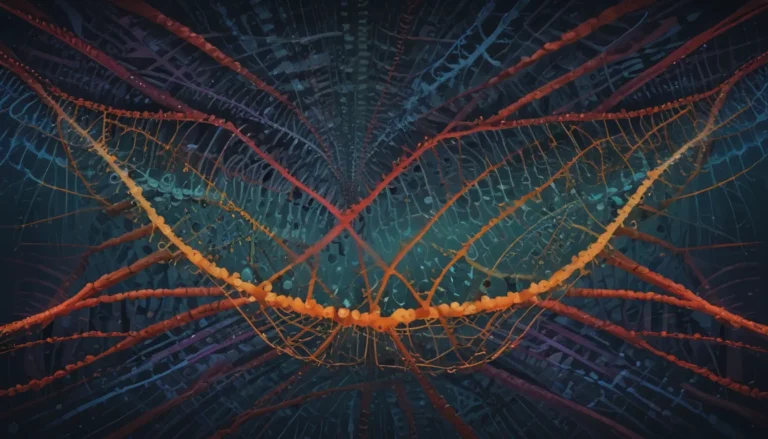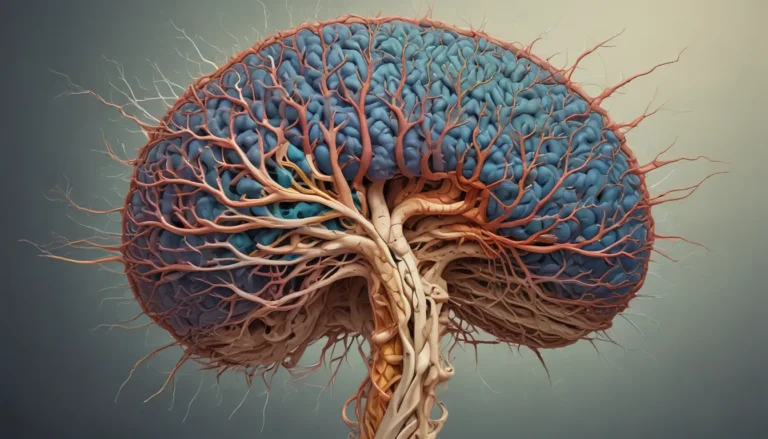A Note About Images: The images used in our articles are for illustration purposes only and may not exactly match the content. They are meant to engage readers, but the text should be relied upon for accurate information.
Welcome to the enchanting world of primary succession, a captivating ecological process that transforms barren landscapes into thriving ecosystems. In this article, we will embark on a journey to discover 17 unbelievable facts about primary succession, shedding light on the remarkable adaptations, interactions, and transformations that take place during this fascinating phenomenon. From the astonishing resilience of pioneer species to the intricate web of relationships that develop between organisms, primary succession encompasses a vast array of captivating discoveries. So, join us as we delve into the intriguing world of primary succession and uncover some truly jaw-dropping facts!
Unraveling the Mysteries of Primary Succession
Primary succession is nature’s way of turning barren land into thriving ecosystems, showcasing the incredible resilience and adaptability of our planet over hundreds or even thousands of years. Pioneer species like lichens and mosses pave the way for diverse plant and animal life, while plants play a crucial role in altering the environment to make it suitable for other organisms to thrive.
Nature’s Blank Canvas
Primary succession is the process of colonization and establishment of life on previously barren or lifeless surfaces, such as volcanic rock or glacial moraines.
The Pioneer Species
During primary succession, pioneer species such as lichens and mosses are the first organisms to colonize the bare substrate, paving the way for future plant and animal life.
The Role of Ecosystem Engineers
In primary succession, plants play a crucial role as ecosystem engineers, gradually altering the physical environment to make it more suitable for other organisms to thrive.
Breaking Rocks Apart
Through a process called root wedging, pioneer plant species like ferns and small trees help break down rocks by pushing their roots into crevices, gradually dismantling the substrate.
Nitrogen Fixation Superstars
Pioneering lichens and some types of bacteria have the amazing ability to fix nitrogen from the atmosphere, converting it to a usable form for plant growth, thus enriching the soil.
From Bacteria to Soil
As lichens and other pioneer organisms die and decompose, they contribute organic matter to the barren land, further enriching the soil and creating a foundation for future plant growth.
The Arrival of Herbaceous Plants
As the soil becomes richer and more stabilized, herbaceous plants begin to appear, adding more diversity to the developing ecosystem.
The Rise of Shrubs and Small Trees
With the establishment of herbaceous plants, shrubs and small trees start to take root, providing shade and protection for other species to thrive.
The Arrival of Larger Trees
Over time, larger trees like oak and pine begin to dominate the ecosystem, offering a canopy that supports a complex web of life beneath.
Wildlife Returns
As the ecosystem matures, various animals start to inhabit the area, attracted by the availability of food and shelter provided by the diverse plant life.
Succession on the Move
Primary succession can also occur in aquatic ecosystems, such as lakes and ponds, where bare rock, sediment, or newly formed land provide the starting point for colonization.
Volcanic Awakening
Volcanic eruptions can create new land, and primary succession quickly follows, transforming these harsh landscapes into thriving habitats.
Glacial Retreat Reveals Life
As glaciers recede, they leave behind barren terrain. However, primary succession steps in, gradually transforming these icy landscapes into vibrant ecosystems.
Nature’s Resilience
Primary succession showcases the remarkable ability of nature to restore and regenerate after catastrophic events, such as volcanic eruptions or glacial movements.
Climate Change Impact
Climate change can influence the timing and rate of primary succession, as altering temperature and precipitation patterns can affect the availability of resources for colonization.
Lessons for Restoration
Studying primary succession provides valuable insights for ecosystem restoration projects, aiding in the recovery of damaged or degraded habitats.
Witnessing the transformation of lifeless land into flourishing ecosystems is awe-inspiring, reminding us of nature’s incredible ability to rejuvenate itself.
Conclusion
Primary succession is a fascinating process that showcases the incredible resilience and adaptability of nature. From barren landscapes to thriving ecosystems, the journey of primary succession is filled with remarkable and unbelievable facts.
Throughout this article, we’ve explored various aspects of primary succession, including the pioneering organisms, nutrient cycling, and the role of time in ecosystem development. We’ve delved into the concept of primary succession on different habitats, such as volcanoes, glaciers, and sand dunes.
From the ability of lichens to break down rocks and create soil to the intricate web of interactions that drives ecosystem formation, primary succession is a testament to the power of nature’s intricate balance and constant adaptation.
In conclusion, learning about primary succession opens up a whole new world of understanding about how life begins and flourishes in even the most challenging environments.
FAQs
Q: What is primary succession?
A: Primary succession is the natural process by which new ecosystems are established on barren, lifeless terrain, such as rocks, sand, or volcanic ash, where no soil exists.
Q: What are pioneering organisms?
A: Pioneering organisms, such as lichens and mosses, are the first organisms to colonize and survive in a newly formed or disturbed area during primary succession. They play a crucial role in breaking down rocks and creating soil for other plants to grow.
Q: How does primary succession differ from secondary succession?
A: Primary succession occurs in habitats with no soil, while secondary succession occurs in areas that have been previously inhabited and have existing soil. Primary succession takes longer and starts from scratch, while secondary succession has a faster rate of ecological recovery.
Q: What is the role of time in primary succession?
A: Time is a critical factor in primary succession as it determines the stages of ecosystem development. The process can take decades, centuries, or even millennia for a stable and diverse ecosystem to be established.
Q: What are the benefits of studying primary succession?
A: Studying primary succession enables us to understand how life forms and adapts in extreme environments. It provides insights into ecological resilience, conservation strategies, and the importance of biodiversity in ecosystem formation and stability.
Q: Can humans facilitate primary succession?
A: Yes, humans can help initiate primary succession by seeding or planting pioneer organisms in barren areas. This practice, known as ecological restoration, aims to accelerate the natural recovery process and restore the ecosystem’s functionality.
So, dive deeper into nature’s wonders and uncover the secrets of ecology. Discover the resilient pioneer species paving the way for life’s abundance. Each topic offers a unique glimpse into our planet’s incredible adaptability and endless wonders.
We are committed to delivering valuable and engaging content, ensuring that every fact shared is contributed by real users like you. Our dedicated editors meticulously review each submission to maintain the highest standards of accuracy and reliability. Trust in our commitment to quality and authenticity as you explore and learn with us.






